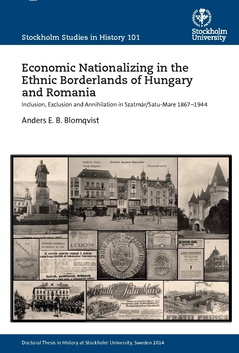The history of the ethnic borderlands of Hungary and Romania in
the years 1867–1944 was marked by changing national borders,
ethnic conflicts and economic problems. Using a local case study of
the city and county of Szatmár/Satu-Mare, this thesis investigates the
practice and social mechanisms of economic nationalizing. It explores
the interplay between ethno-national and economic factors, and
furthermore analyses what social mechanisms lead to and explain
inclusion, exclusion and annihilation.
The empirical results show that citizenship in both countries was
separated in an ethnically hierarchical way, making minorities secondclass
citizens. This process of ethnic, and finally racial, exclusion
marked the whole period, culminating in the annihilation of Jews
throughout most of Hungary in 1944.
The overall thesis is that economic nationalizing through the
exclusion of minorities induces vicious circles of ethnic bifurcation,
political instability and unfavorable conditions for achieving
economic prosperity. Exclusion served the elite’s short-term interest
but undermined the nation’s long-term ability to prosper.


